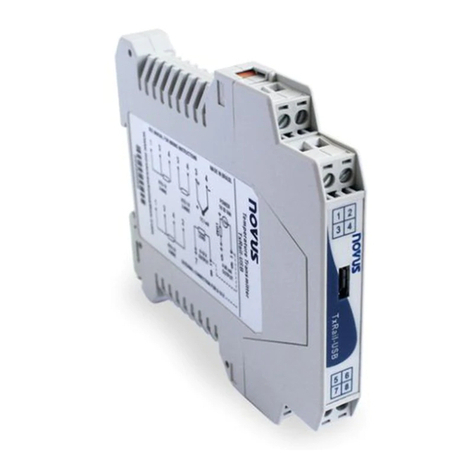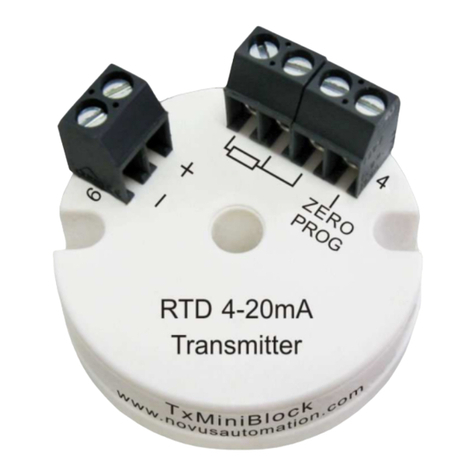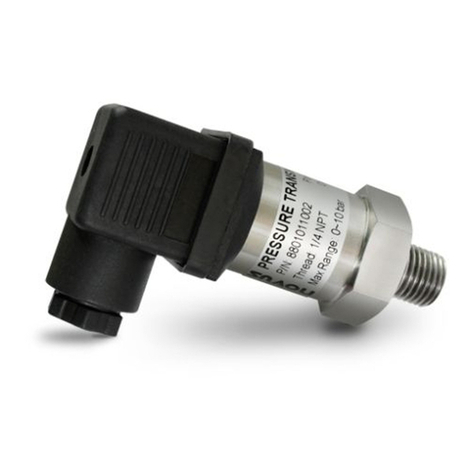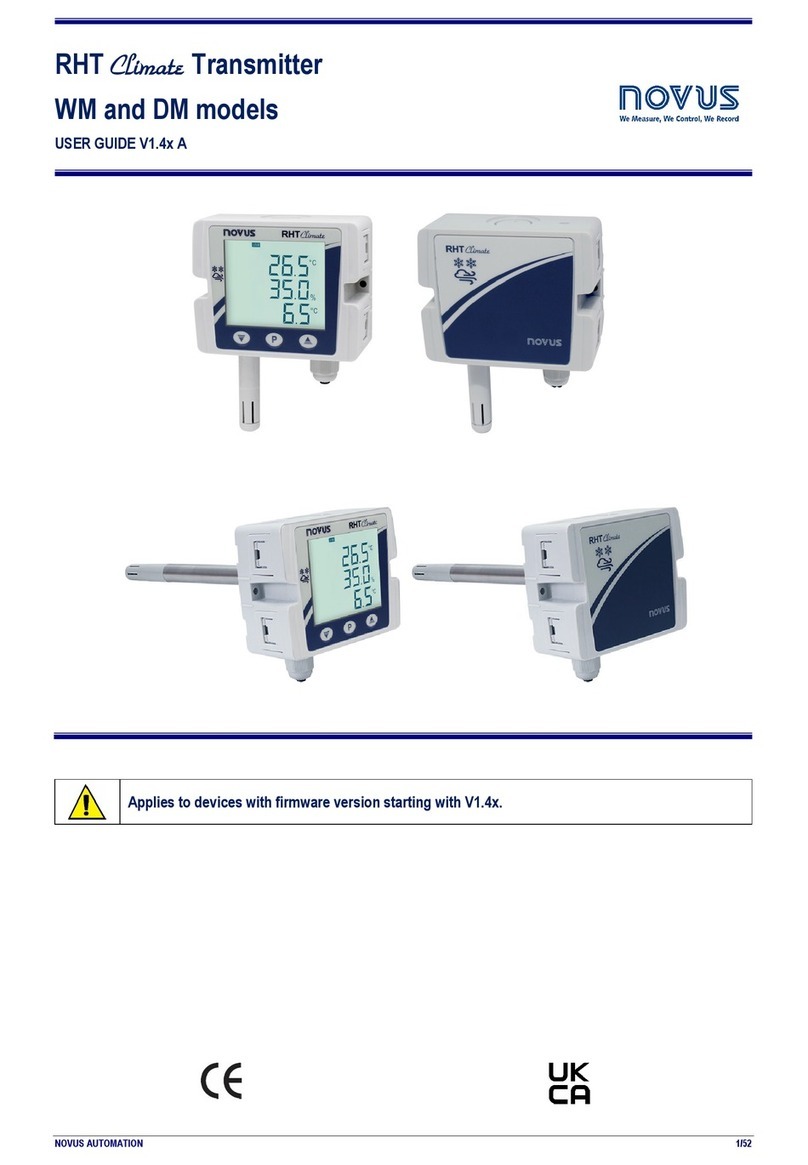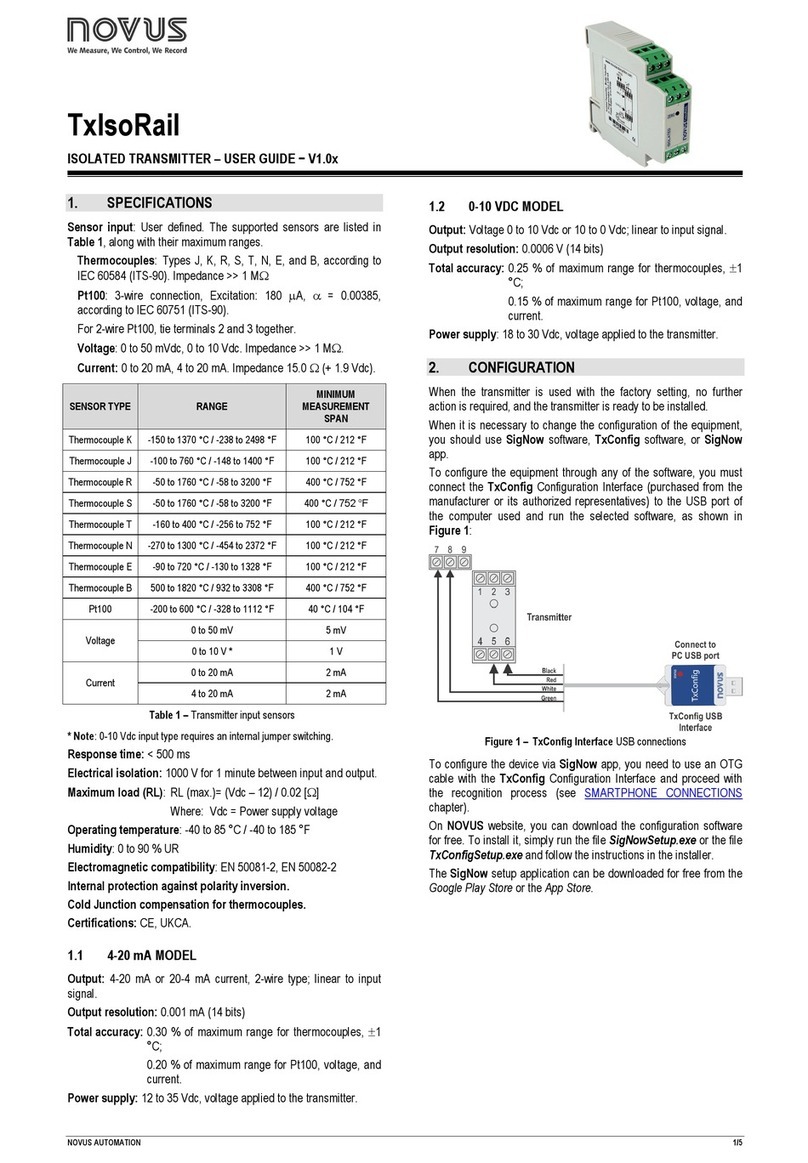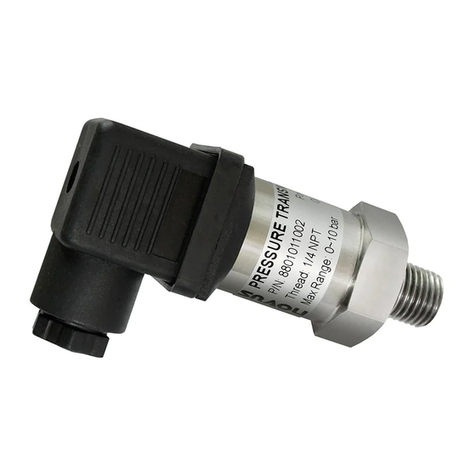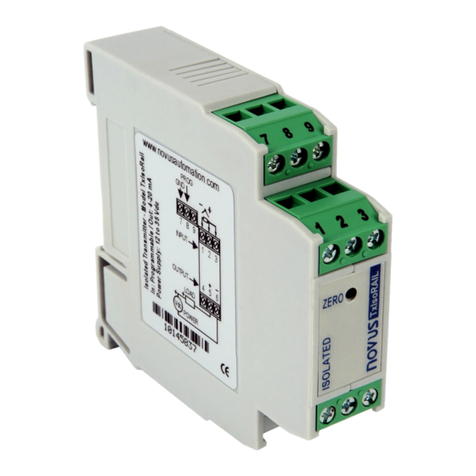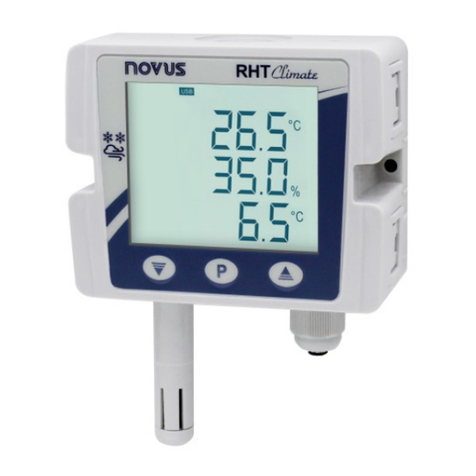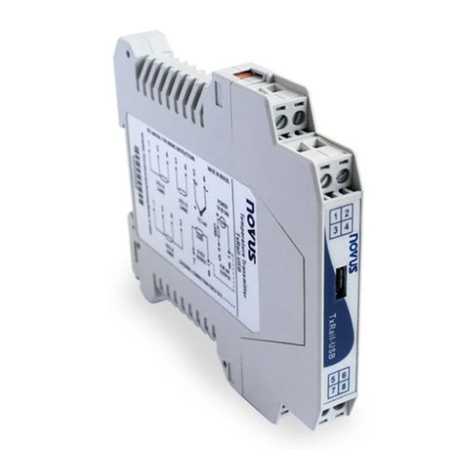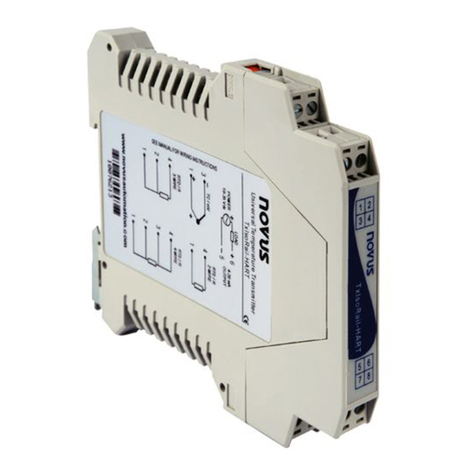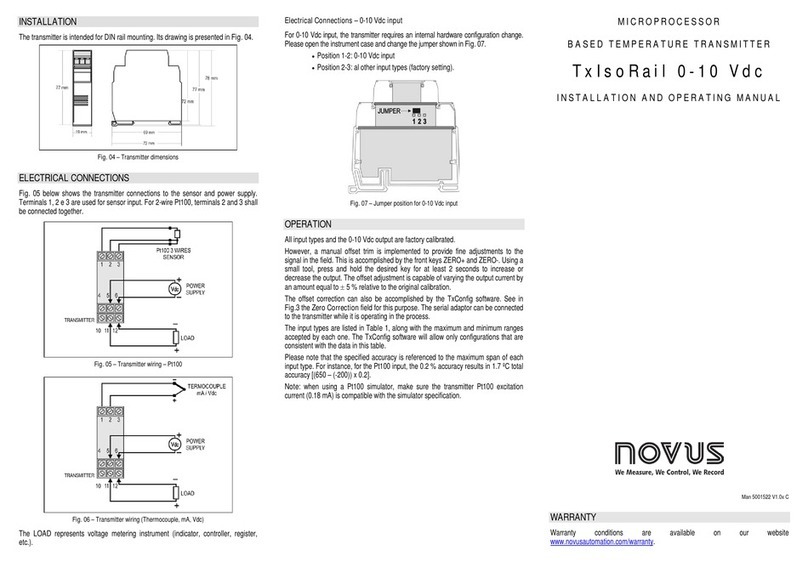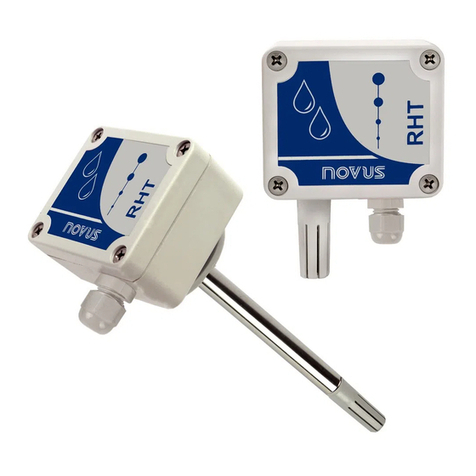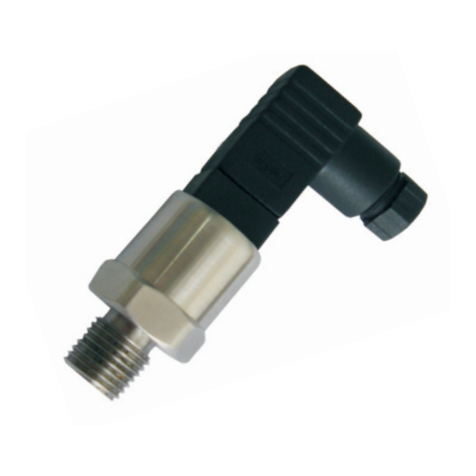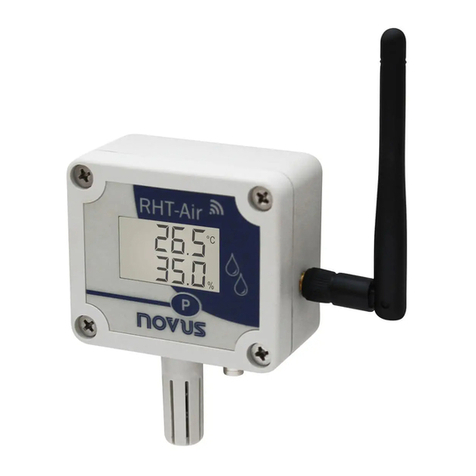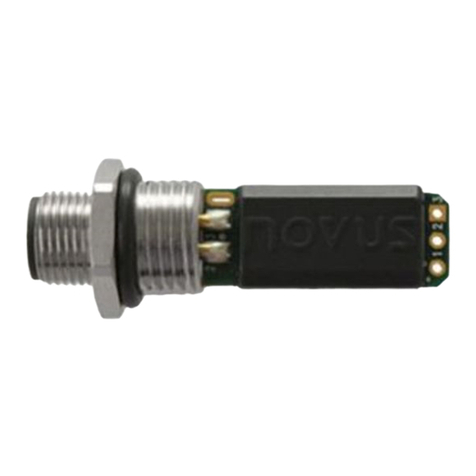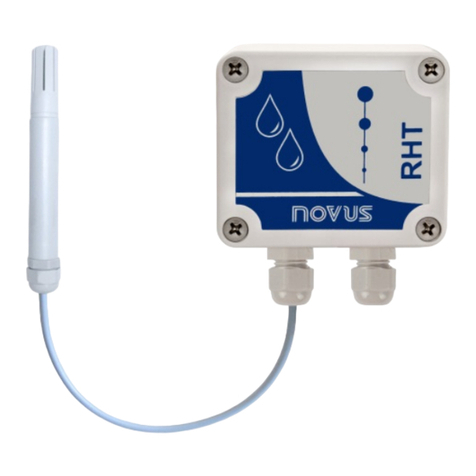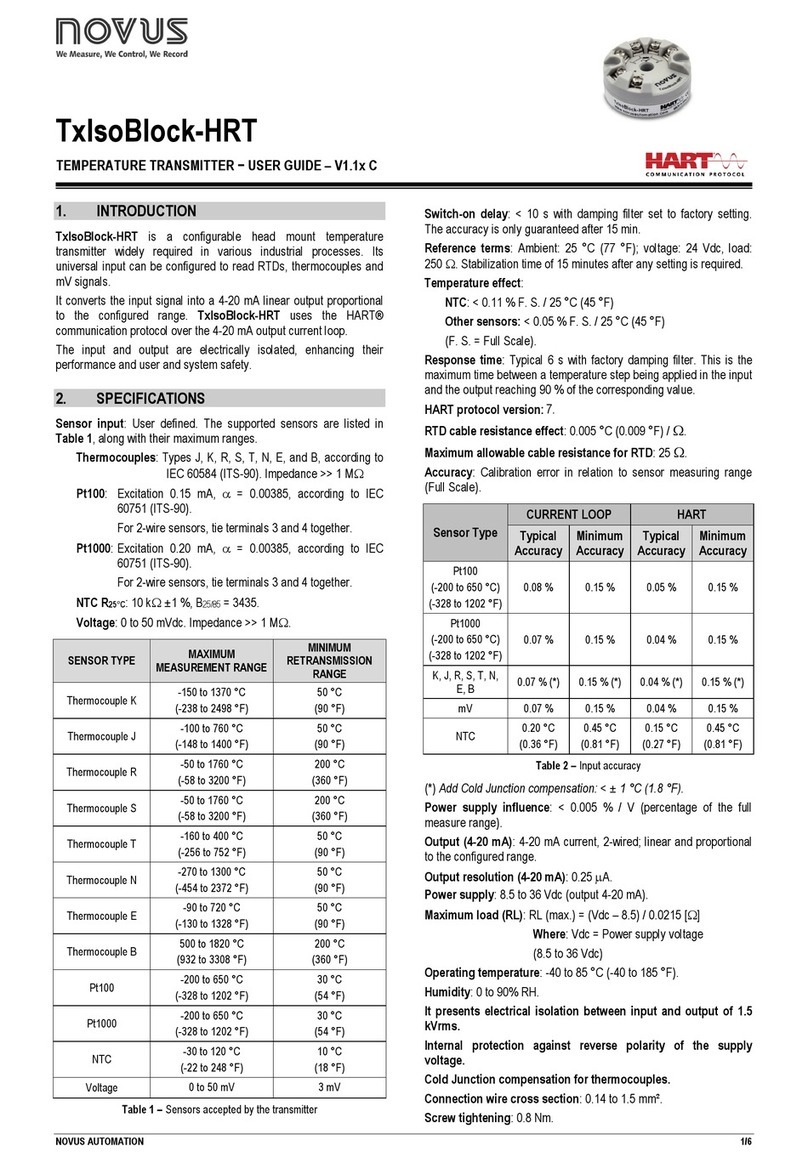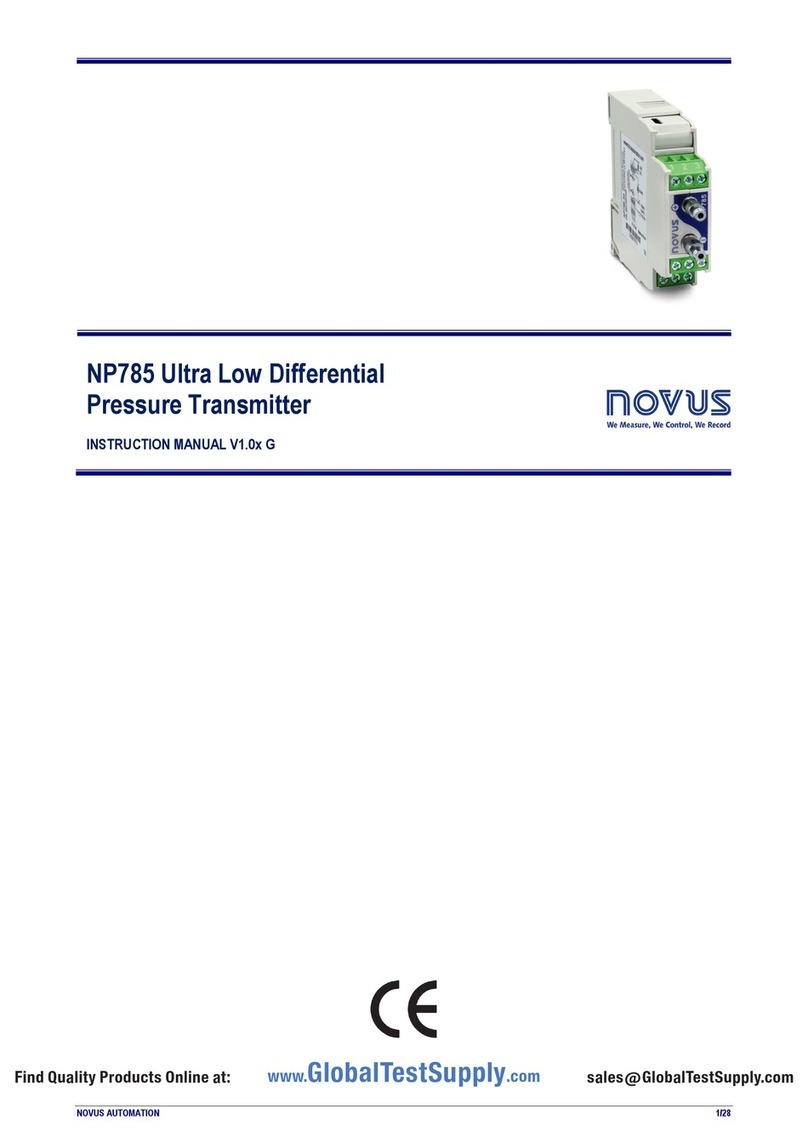
RHT-WM-485-LCD, RHT-DM-485-LCD and RHT-P10-485-LCD Transmitters
NOVUS AUTOMATION 3/6
The RHT-P10-485-LCD electronic housing is designed for wall mounting,
while its remote sensor probe is intended for inserting and screwing in a
flange.
Fig. 08 – Probe dimensions
Fig. 09 – Mounting flange
Note: The flange is not bundled with the transmitter. It must be ordered
separately.
4ELECTRICAL INSTALLATION
ELECTRICAL CONNECTIONS
The Fig.10 below shows the necessary electrical connection. The terminals
1, 2, 3 and 4 are intended for connection.
1 - VCC Power supply Black wire
2 + VCC Power supply White wire
Bi-directional data line.
4 D0 D- B
Bi-directional inverted data
line. Brown wire
Fig. 10 – Electrical connections
Fig. 11– M8 Connector Pins
Be careful when connecting the power supply wires to the
RHT-WM-485-LCD, RHT-DM-485-LCD and RHT-P10-485-
LCD Transmitter. If the positive wire from the power source
is
connected, even momentarily, to one of the
communication connection terminals, the transmitter may be
damaged.
RECOMMENDATIONS FOR INSTALLATION
•Small electric signal conductors must pass through the system plant
separated from the actuating conductors or from high current or voltage
lines, if possible, inside grounded conduits.
•The power supply of the instruments must be provided from a proper
network for instrumentation.
•In control and monitoring applications it is essential to consider what can
happen if any part of the system should fail.
•We recommend the use of RC FILTERS (47Ωand 100nF, series) in
parallel with contactor and solenoid coils etc.
5CONFIGURATION / OPERATION
The user will receive the transmitter perfectly calibrated, without the need for
any adjustments. The configuration performed at the factory has the
following characteristics:
(Communication Address) = 247
(Communication speed) = 1200
(Parity) = Par
Stop Bit = 1
The DigiConfig for Windows® is a software used for configuration of the
RHT-WM-485-LCD, RHT-DM-485-LCD and RHT-P10-485-LCD transmitters.
For its installation, run the “DigiConfigSetup.exe” and follow the instructions
as shown.
DigiConfig is provided with a complete help file, giving all the information
necessary for its full use. For using the help feature, start the application and
select the “Help” menu or press the “F1” key.
Access the site www.novusautomation.com in order to obtain the installer for
DigiConfig and the additional manuals.
5.1 SCREENS OF THE TRANSMITTER
Indication screen for the measured values in the transmitter:
1ª Screen: Main
For configuring the communication parameters, press the button (± 5
seconds) until the screen starts blinking, then release the button and press it
again in order to increment. When the desired value appears, release the
button and wait until the screen stops blinking (± 10 seconds). In order to
access the next screens, press the button.
Configuration screen for the Modbus Address – Defines the address of the
module within the Modbus network. Values between 1 and 247.
2ª Screen: Modbus Address
Configuration screen for the Baud-Rate - Defines the Modbus
communication speed. Valid values 1,200, 2,400, 4,800, 9,600, 19,200,
38,400, 57,600 and 115,200.
3ª Screen: Baud-Rate
Configuration screen for the Parity - Defines the parity code used for Modbus
communication. Value 0(none), 1(odd) and 2(even).

